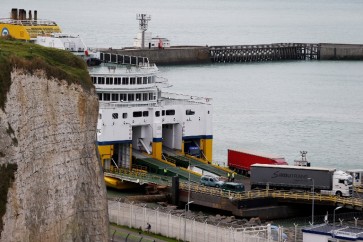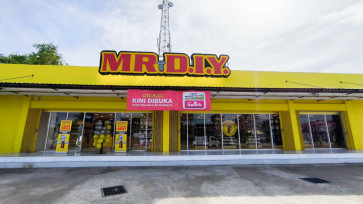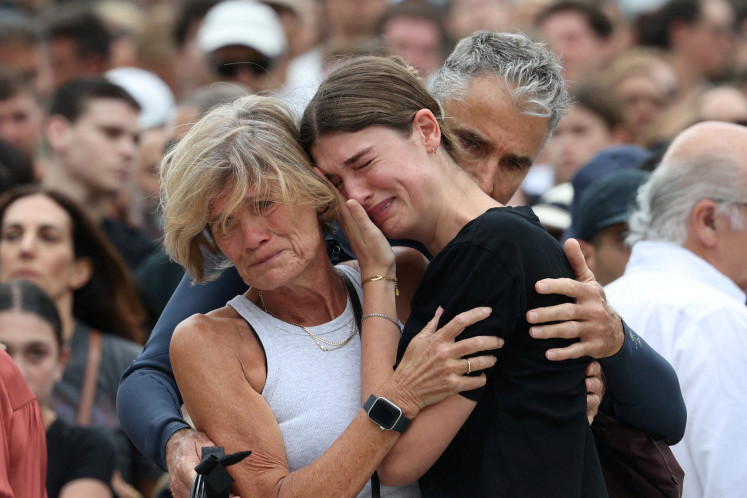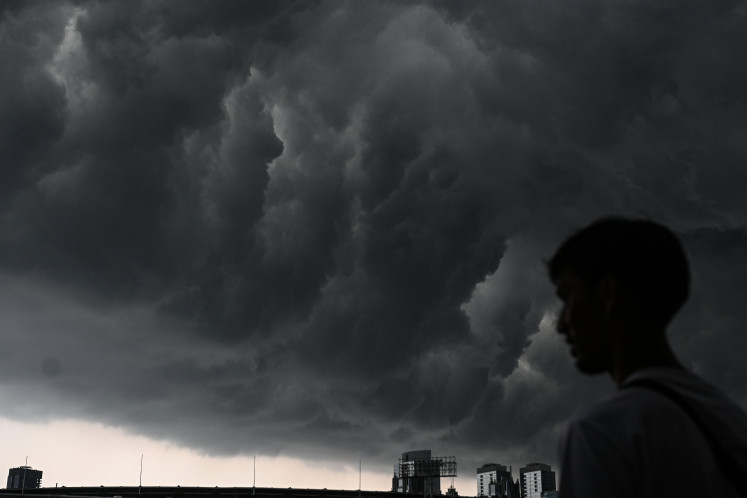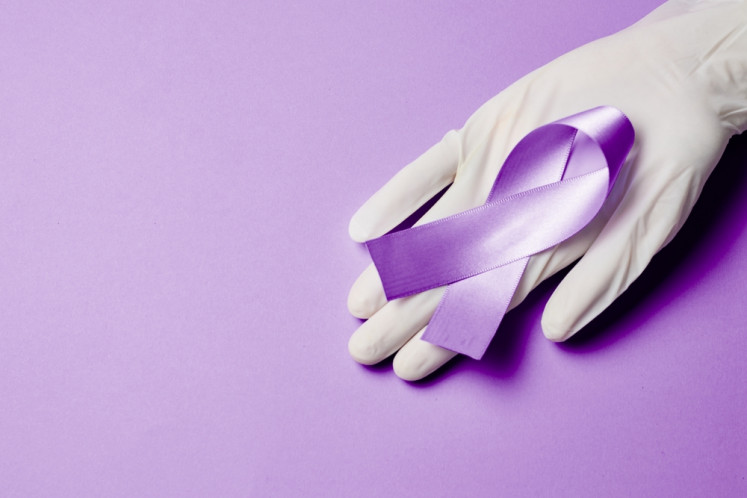Popular Reads
Top Results
Can't find what you're looking for?
View all search resultsPopular Reads
Top Results
Can't find what you're looking for?
View all search resultsPowerful quake in Russia's Far East causes tsunami, Japan and Hawaii order evacuations
A tsunami with a height of 3-4 meters was recorded in parts of Kamchatka, said Sergei Lebedev, regional minister for emergency situations, urging people to move away from the shoreline.
Change text size
Gift Premium Articles
to Anyone
A
magnitude 8.8 earthquake struck off Russia's Far Eastern Kamchatka Peninsula on Wednesday, damaging buildings and generating a tsunami of up to 4 meters that prompted warnings and evacuations stretching across the Pacific Ocean.
Several people were injured in the remote Russian region, while much of Japan's eastern seaboard - devastated by a powerful earthquake and tsunami in 2011 - was ordered to evacuate.
"Today's earthquake was serious and the strongest in decades of tremors," Kamchatka Governor Vladimir Solodov said in a video posted on the Telegram messaging app.
A tsunami with a height of 3-4 meters was recorded in parts of Kamchatka, said Sergei Lebedev, regional minister for emergency situations, urging people to move away from the shoreline.
The US Geological Survey said the earthquake was shallow at a depth of 19.3 km, and was centered 119 km east-southeast of Petropavlovsk-Kamchatsky, a city of 165,000. It revised the magnitude up from 8.0 earlier, and reported a strong aftershock of magnitude 6.9 soon after.
Japan's weather agency upgraded its warning, saying it expected tsunami waves of up to 3 meters to reach large coastal areas starting around 0100 GMT.
Tsunami alarms sounded in coastal towns across Japan's Pacific coast with authorities urging people to seek higher ground.
Footage on public broadcaster NHK showed scores of people in the northern island of Hokkaido on the roof of a building, sheltering under tents from the beating sun, as fishing boats left harbors to avoid potential damage from the incoming waves.
Workers evacuated the stricken Fukushima nuclear plant, where a meltdown following the 2011 tsunami caused a radioactive disaster, operator TEPCO said.
There were no injuries or damage reported so far, and no irregularities at any nuclear plants, Japan Chief Cabinet Secretary Yoshimasa Hayashi said.
The US Tsunami Warning System also issued a warning of "hazardous tsunami waves" within the next three hours.
Waves reaching more than 3 meters were possible along some coasts of Russia and Ecuador, while waves of 1-3 meters were possible in Japan, Hawaii, Chile and the Solomon Islands, it said. Smaller waves were possible along coastlines across much of the Pacific, including the US West Coast.
"Due to a massive earthquake that occurred in the Pacific Ocean, a Tsunami Warning is in effect for those living in Hawaii," US President Donald Trump said in a social media post.
"A Tsunami Watch is in effect for Alaska and the Pacific Coast of the United States. Japan is also in the way. Please visit tsunami.gov/ for the latest information. STAY STRONG AND STAY SAFE!"
Hawaii ordered evacuations from some coastal areas. "Take Action! Destructive tsunami waves expected," the Honolulu Department of Emergency Management said on X.
The Hawaii warning urged residents of low-lying areas to either move to higher ground or to the fourth floor of a building.
Several people sought medical assistance following the quake, Oleg Melnikov, regional health minister, told Russia’s TASS state news agency.
"Unfortunately, there are some people injured during the seismic event. Some were hurt while running outside, and one patient jumped out of a window. A woman was also injured inside the new airport terminal,” Melnikov said.
“All patients are currently in satisfactory condition, and no serious injuries have been reported so far.”
Russia's Ministry for Emergency Services said on Telegram that the port in the Sakhalin town of Severo-Kurilsk and a fish processing plant there were partially flooded by a tsunami. The population has been evacuated.
While a kindergarten was also damaged, most buildings withstood the quake and no fatalities had been reported, the ministry added.
Kamchatka and Russia's Far East sit on the Pacific Ring of Fire, a geologically active region that is prone to earthquakes and volcanic eruptions.
The Russian Academy of Sciences said it was the strongest quake to hit the region since 1952.
"However, due to certain characteristics of the epicenter, the shaking intensity was not as high ... as one might expect from such a magnitude," said Danila Chebrov, director of the Kamchatka Branch of the Geophysical Service, on Telegram.
“Aftershocks are currently ongoing ... Their intensity will remain fairly high. However, stronger tremors are not expected in the near future. The situation is under control.”



